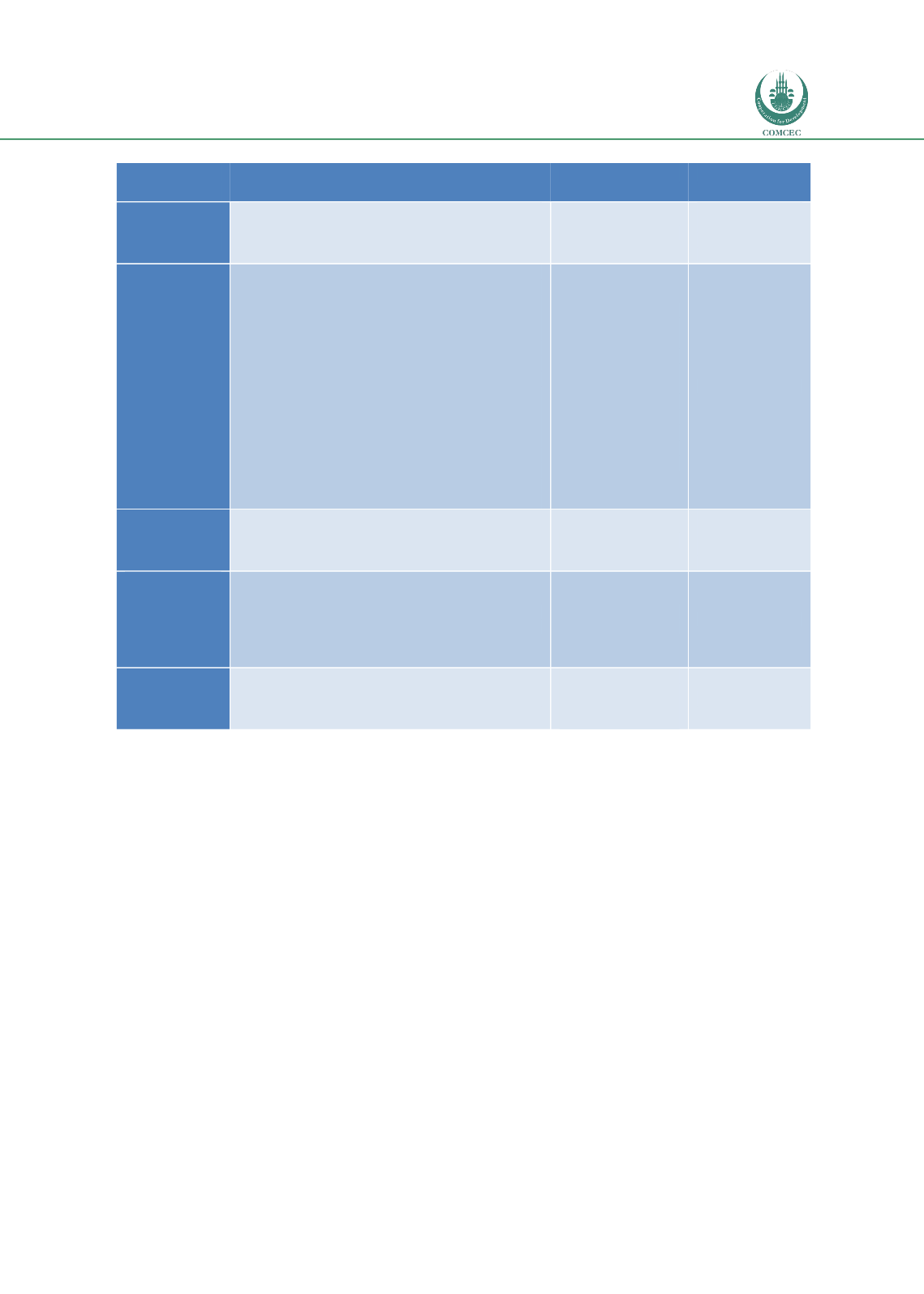

Reducing Postharvest Losses
In the OIC Member Countries
63
Postharvest
step
Maize
Rice
Sorghum
Sorting/
grading
Donal-type sieves
Training and implementation of differential prices
Use of shelling machine that can blow grains for
cleaning
-
Creation of
incentives to
produce a better
product
Storage
Hermetic storage bags, application of pesticide
(Sofagrain and Actellic super)
High quality warehouse or storage silo; trainings on
technical drying and technical storage
Improved clay granary, triple PICS bag, ZeroFly Bag,
metal silo, collective storage in village store houses
Improved granaries, silos and metal silos
Metal silos, hermetic bags. traditional storage
Thorough cleaning of store rooms and sacks prior to
grain loading, better extn and farmer understanding
of effective grain protection methods
Training: for appropriate storage structures and
solutions, effective and regular monitoring, safe and
effective pest control.
Use of PICS bags, metal silos, pesticides to control
insects and rodents
Use of plant based
insect repellents like
pepper, and cats for
rodent (mice and
rats)
Use scientifically
designed storage
facilities and adopt
systematic storage
practices (good
practices)
-
Marketing
Farmers group marketing
Farmers should market their maize in groups and
pack maize in clean and strong bags
Less informal sales to traders
-
Creation of more
demand at
specified quality
standards
Secondary
processing
(e.g. milling,
oil
extraction)
Remove not all the coats since this decreases
nutrients during processing
Adopt multistage
milling process
-
Other
solutions
-
Use of improved low
cost parboiler for
cooking rice
-
In order to reduce postharvest losses, respondents suggested that better equipment (i.e.
dryers), mechanisation, and storage facilities (including adapted bags, silos etc.) should be
required. Training of the actors at the various steps of the value chain to better handle and
market products was also mentioned and there should be incentives to produce a better
product i.e. have specified quality standards. With rice, it was suggested that improved
varieties (non-shattering rice) should be available to decrease losses in the value chain. A
number of constraints to reducing postharvest losses (PHLs) were identified by the
respondents
(Table).
















